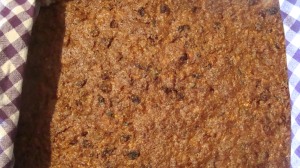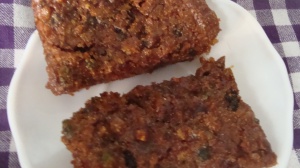Today (or rather, tomorrow) is Thai Pongal festival celebrated by Tamils around the world. It is a harvest festival celebrated at the end of the harvest season in the tenth month (தை, Thai) of the Tamil calendar and is a festival offering thanks for a bountiful harvest (pongal, which also refers to the sweet rice dish made on that day) and for a prosperous year to come. In Sri Lanka, it is usually celebrated for a day whereas in India, it is a 3 or 4 day festival with a day celebrating the hard work of the cattle in the fields the previous year.
I am re-sharing the pongal recipe that I posted last year.

One of my close friends and her family visited me last week which brought back pleasant memories from over a decade ago when I had first met her. So, for today’s music, I would like to feature the songs of a musician from her country that she introduced me to.
The first song is one of Dulce Pontes’ famous songs – Canção do Mar from her album (Lagrimas or Tears, 1993). This song was covered a decade later by Sarah Brightman.
Dulce Pontes contributed to the popular revival of Portuguese folk, Fado, in the 90s. The second song is one such song.
Hope you enjoyed the Portuguese music shared today and that you do try out the Pongal recipe! Happy Pongal!

Pongal
Ingredients:
- Rice – 1 cup
- Roasted split gram (without skin) – ¼ cup
- Jaggery – 1 cup (grated)
- Coconut – ½
- Cardamom – 4 or 5, crushed
- Cashew nuts – few, chopped
- Raisins – 1 tbsp
- Water
Method:
- Wash the rice and gram and cook them in a pot with 2 ½ cups of water. Cook for around 15 to 20 mins, till the water dries up.
- Grind and extract coconut milk by blending the freshly scraped half of a coconut with 1 cup of water.
- Once the rice and gram is cooked, add the grated jaggery and mix.
- Then, add the coconut milk and crushed cardamoms. Bring to a boil on high heat and cook for a few more minutes before reducing the heat.
- Add the chopped cashew nuts. Cook until the pongal mixture starts coming together and starts to thicken.
- Just before removing from heat, add the raisins and mix.
- Remove from heat and cover.
- Serve pongal with bananas.
Recipe source: Raji Thillainathan.

 Today’s music features some Grammy award-winning musicians from Mali. I have a couple of friends who are huge fans of music from Mali, which is how I was introduced to some of the music I am sharing here.
Today’s music features some Grammy award-winning musicians from Mali. I have a couple of friends who are huge fans of music from Mali, which is how I was introduced to some of the music I am sharing here.



















